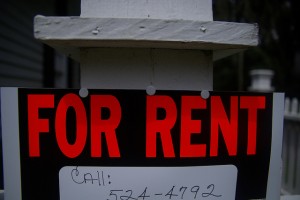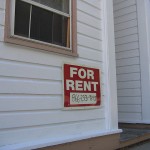Property management isn’t an easy job. The author of this post, Matt Stigliano, gets that, but he does think there’s room for improvement.
In dealing with agents all day in my role at the office, I see the same problems with management for rental properties . I hear the same complaints from both the prospective tenants as well as their agents who are assisting them in finding a rental. The problems don’t seem to change…so it’s time to solve the problems. What follows is my personal challenge to San Antonio area property managers – both those in our office and those who work for other companies. I welcome any dialogue that would generate ideas to fix these problems. I know that some of my ideas may seem impossible to someone who handles multiple properties on a daily basis. I know I won’t change the world with this post, but I would love to see such a dialogue take place and all of San Antonio work together to make our system better.
Property Management in San Antonio – A Challenge
Part I – Data
One of the most common complaints I hear from prospective tenants is about the lack of information. Whether we’re talking about photos, room sizes, descriptions, or details about the neighborhood amenities; prospective tenants want data. In a city like San Antonio, where we are experiencing growth and an influx of out-of-towners, many new residents are conducting their searches online before they get here – and the lack of data is frustrating for them. In the age of Docusign and IDX feeds, we need to think of what the consumer needs in order to help them make better decisions and then we need to provide them with that information.
Of course, the counter argument is that rentals are flying off the shelves faster than we can put them on the market. Let’s be honest with ourselves here though, it doesn’t take that long to do a full fledged MLS listing for your rental properties. A few extra photos (particularly of the interior), some room measurements, and a few extra clickboxes defining what is included with the property (yes, my clients do want to know whether it’s an electric or gas water heater). It’s not that far of a stretch.
This then leads to questions about data accuracy. I could rant on this issue for hours, but I’m going to keep it simple – get the facts straight and put them in the MLS correctly. It seems simple enough, but time and time again, we find ourselves trying to track down agents in order to figure out the true facts about the property.
Part II – The Team
I truly believe all property managers need a team to function well. Solo operations are often the hardest to rent from…and when the market is moving quickly, an agent’s response time means everything. That team should be well trained – they may be unlicensed assistants or not know everything that the lead agent knows about property management, but they should be well versed enough to know what to do when someone calls.
Of course, there’s a lot to know about the Texas Property Code and the legal ramifications of that code can be complex at best. With this in mind, the team should stay on top of the latest news and developments within the Property Code – education is always going to be important, no matter what the topic.
It should be pretty obvious, but the team should also know what’s going on with any given property. Too many times I have called a team to find out if a property was still available, only to find out that no one knew, because they were not updated on the status.
Part III – The Status
Not only should the property managers know the status of the property, but even more importantly, the MLS should reflect the rental property’s status. Changing an ACT (Active) status to AR (Application Received) to RNTD (Rented) isn’t difficult and can spare a lot of frustration. The agents in my office (and from my own experiences as well) spend more time trying to see if the property is actually available than they do showing properties. I’m still waiting for call backs about properties I looked into back in 2008 (don’t worry, I’m not waiting by the phone). Property managers waste their time, the showing agent’s time, and the prospective tenant’s time by not keeping their MLS status up to date.
PART IV – The Paperwork
Many property managers (including those that work at Kimberly Howell Properties) require additional forms to be signed by the applicant. These typically spell out the rental criteria for applicants and information about how they will be screened. In the MLS we have a place to upload such extra documents, but in many instances the property manager neglects to upload their forms. Only when the agents are rushing about trying to get the applicants’ forms dropped off at the property managers office are they informed that they need an additional document signed. Upload the document to the MLS and we can show up at your office better prepared.
PART V – Communication and Payment
Communicate with the agent and the prospective tenants. If there’s something holding you up and you’re not going to get the application done in a reasonable amount of time, let us know. Letting us know prevents the multiple calls from both parties that frustrate you as a property manager. Yes, we know you’ll let us know when you hear something, but if for some reason you think the process of vetting the client is going to take a little bit more than usual, give us a quick call. Easy as that.
As for payment – I shouldn’t even have to say this. Pay your invoices on time. The time spent chasing you down for the commissions you owe is frustrating. I know that in some cases by the time the agent has taken a client out looking and then following up with you trying to get paid…well, they’ve lost time and money. Like anyone in real estate, you’re a business. Pay your bills like one. I’m still chasing down agents for commissions from early this year in some cases. It’s shameful.
Overall, I don’t think property managers are bad, but I do think there are enough agents out there who are practicing property management that are making a mess of the system. Renters are frustrated and many agents don’t want to work rentals because they can be more work than the commission is worth. If everyone steps up their game, even the worst property managers would be forced to make changes to improve their conduct in the business. We can all elect to stay the same and not make any changes and do business as usual, but I think the rental clients in San Antonio deserve better.
As I stated at the beginning of this post, I invite all property managers to let me know what they think here in the comments. Let’s discuss what’s good and bad. Let’s see where we can be more effective and help more clients with their move to our wonderful city. My ears are open and I’d love to talk about what we can do as a whole. Thanks for reading.
image courtesy of Charleston’s TheDigitel
Related Posts






Another addition regarding payment: Be fair. If a house is listed for lease at $3000/month, chances are good that you as the listing agent are going to take home around half of that (it varies). Offering up $100 to a cooperating broker while you rest smugly with $1400 turns a lot of agents against the thought of even showing rentals. And showing rentals can be hard, tiring work for an agent looking to do it right. Make sure your peers are rewarded fairly for their time and the whole process could go a lot smoother for everyone!
Just called seven rental listings to check availability. It’s 10:30 am and only three people answered. Of those three, two of the agents left their office numbers as their main contact number, so I didn’t even speak to the agent. Out of seven calls, only one was answered by the agent. The other two, answered by office staff, were well-known property management companies, so I expected them to answer and to not speak directly with the agent (they use the team approach that I mentioned).